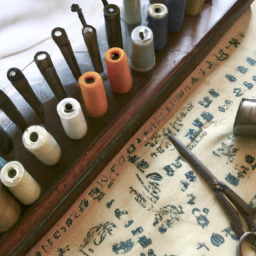
History of Sewing Buttons
The history of buttons traces back thousands of years, with evidence of their use dating
as far back as ancient civilizations. From purely ornamental to essential fasteners,
buttons have played a significant role in the evolution of clothing and fashion across
different cultures.

The earliest known buttons were made from seashells, bones, and sturdy materials like
wood and metal. These buttons were predominantly used for decorative purposes, adorning
garments to reflect social status or convey religious symbolism. The ancient Romans were
particularly known for their exquisite button craftsmanship, often incorporating gemstones
and intricate designs.
However, it was during the Middle Ages that buttons started to gain prominence as functional
fasteners. This shift can be attributed to the rise of tailored clothing and the need for
secure closures. Buttons quickly became an essential component of garments, allowing for
adjustable or detachable sleeves, collars, and other parts.
It was not until the 13th century that buttonholes were widespread. Prior to that, buttons
were attached using various methods like looping or sewing through fabric folds. Buttonholes
allowed for a more secure and visually appealing attachment, further fueling the popularity
of buttons as fasteners.
With the Industrial Revolution in the 18th century, buttons experienced a significant
transformation. Manual button-making techniques were replaced by machines, streamlining
production and making buttons more accessible. The introduction of button-making materials
like rubber and celluloid expanded the possibilities in design and function.
In the 20th century, buttons experienced a surge of creativity and innovation. They became
a canvas for various art movements, with notable artists designing unique and collectible
buttons. Additionally, buttons with practical features, such as snap buttons and magnetic
closures, were developed, catering to the needs of fast-paced modern life.
Today, buttons continue to evolve alongside fashion trends and technological advancements.
From classic shirt buttons to decorative buttons on couture pieces, they remain an integral
part of garment design. With innovations like smart buttons embedding technology, who knows
what the future holds for these tiny yet essential fasteners!
Image source: arhaus.com




